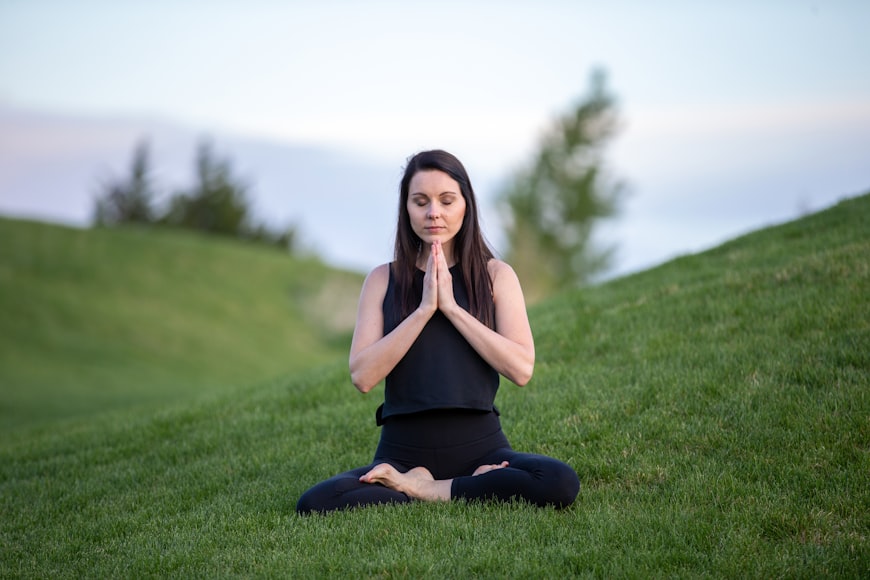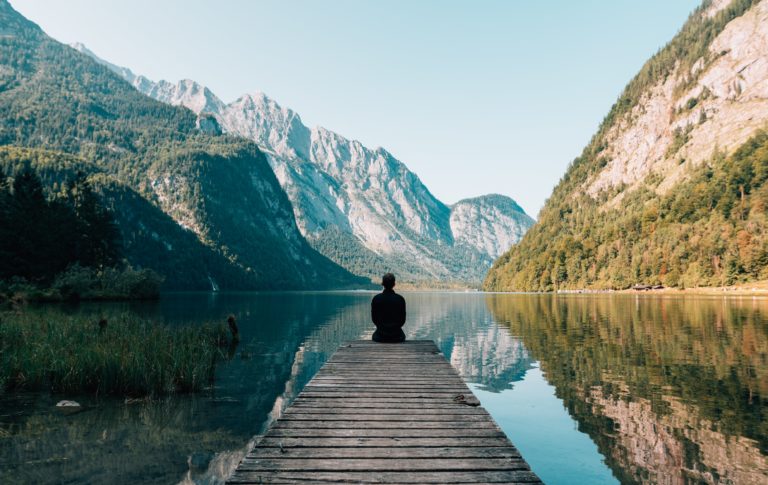“Life begins at the end of your comfort zone.”
– Neale Donald Walsch
Fear creates the illusion that we can control or avoid unwanted circumstances. It gives us a temporary feeling of control and power over our lives.
Having fear is only natural, but when it stops you from pursuing the things you want the most it becomes a big problem.
Fear is also the inner voice that says you’re not good enough, you’ll end up alone, or that no one could ever love the ‘real’ you. It makes unwanted situations and emotions seem so much worse than what they really are.
When you’re constantly bombarded by fearful emotions and thoughts, you’re not free to be your authentic self and live life to the fullest.

How Fear Holds You Back
When your inner fears start to dominate your thoughts and behavior, then your whole life must shrink to fit into your comfort zone. This drastically limits the opportunities you can receive, the new people you can meet, and the experiences necessary to move you towards your goals.
Every time we act on our fear, such as avoiding a social get-together out of fear of meeting new people, it only reinforces the fear and strengthens its hold over our lives.
The more we try to avoid our fear and the situations that trigger it, the more power it has over our minds and lives.
What We Resist, Persists
Avoiding your fears doesn’t work. Neither does trying to avoid the situations that trigger them.
Trying to be stronger than your fear and push it away does not work either.
Simply telling yourself ‘I’m not afraid’ or ‘I’m confident’ or other affirmations are just not enough to change deep-seated, unconscious feelings and behaviors.
Unfortunately, what we resist, persists. If resistance is not working for you, then it is time to try a different strategy.
Feeling Your Fear
Author Susan Jeffers said, “Feel the fear and do it anyway.”
Allowing yourself to feel your fear is a vital first step to healing and overcoming it.
I’ve found from my own experience that this approach is extremely helpful with overcoming my fears. Of course, for extreme fears and phobias you should consult with a medical professional.
Fear is a natural human emotion. It’s completely normal to feel anxious and afraid when we’re outside of our comfort zones. However, we too often don’t allow ourselves to feel our fear because of the negative stigmas around having it.

The Vicious Cycle
The strange thing about fear is that often we start to become afraid – of our own fear. We don’t understand it and this makes us feel like we’re not in control.
Resisting fear creates a vicious cycle that only further perpetuates our fears.
First, we feel fear in a certain situation. For example – maybe you’re afraid of public speaking. The initial fear is of making a fool of yourself and being rejected. The one day you have to give a speech for work. When giving your speech you’re so nervous that you can barely get your words out. You couldn’t think straight and felt like you were going to vomit.
Now, the next time you have to give a speech you’re not only afraid of making a fool of yourself but you’re also afraid of the feeling of being nervous. You try to resist the fearful feelings that come up. You judge yourself harshly and tell yourself you shouldn’t feel afraid.
This may not be a perfect example, but I hope you get my point.
Our feelings of fear are often accompanied with shame, resistance and harsh self-judgement. When we don’t understand our fear, we become afraid of it. We try to resist and push away our uncomfortable feelings.
By not allowing ourselves to feel or ‘be with’ the uncomfortable feeling of fear, we add on another layer of pain associated with it. What we try so hard to push away only comes back to haunt us even more.

Benefits of Mindfulness
A powerful way to break this vicious cycle is to practice mindfulness. Mindfulness changes the way you relate to your fear and other negative emotions. It can help you to let go of resistance and inner turmoil.
Best-selling author Kate Northrup says, “To heal it, you must feel it.”
Practicing mindfulness is a powerful tool for feeling and processing our most difficult emotions. With consistent practice, being mindful can reduce uncomfortable feelings and the resistance you have around them (negative judgments, shame, fear etc.).
This practice has helped me so much in my own struggles with social anxiety and public speaking. It has greatly reduced my anxious feelings and keeps me calm in anxiety-triggering situations.
How to Mindfully Embrace Fear
- Observe – Start by noticing whenever your fear comes up. Observe the feeling in a non-judgmental way. That means try not to think about or label it.
- Notice What it Feels like – Allow yourself to feel the uncomfortable feeling instead of trying to push it away. This may at first seem counter-intuitive and takes practice. Lean into it slowly, you don’t have to feel it all at once. You may start with only a few minutes at first.
- Focus on your Breath – Breathe deeply and slowly. Don’t forget to keep breathing normally even when feeling uncomfortable. Centering your breath will help you be grounded and better able to embrace the uncomfortable feeling.
- Go Deeper – Observe what the fear or anxiety feels like in your body. Where in your body do you feel it? What do the sensations feel like? Ask yourself what thoughts are associated with it? What other emotions or reactions?
- ‘Be With It’ – Allow yourself to just be, even for a small moment at first. Don’t judge yourself or believe you shouldn’t be feeling it. Stop resisting it. Don’t obsess with how to fix it. Do your best to be present in the moment. You’re more than the voice in your head, you’re the one observing the voice in your head and everything going on in your body. Try your best to not react to the thoughts that come up and just observe them.

Final Thoughts
Learning to embrace and overcome fear is an integral part of self-growth and living life to the fullest. You won’t get very far in your goals if you allow your comfort zone to stop you.
We all carry trauma and wounds from our past that create difficult emotions that we are afraid to feel.
It takes time and effort, but we can learn to change the way we react to situations that trigger fear.
Practicing mindfulness is a powerful tool to help you lean into and embrace your fear, and other painful emotions. By creating space within for these emotions to just ‘be,’ you can reduce your resistance, shame, and negative self-judgements around them. You become the observer and are no longer simply reacting unconsciously. This leads to greater self-awareness and insight in how to transform your limiting thoughts and emotions that hold you back.
It’s time to stop avoiding your fears and painful emotions. You don’t have to do it all at once, but just a little at a time. Lean outside of your comfort zone, and mindfully embrace the fear that lies there.
Good luck!






5 Comments
Comments are closed.